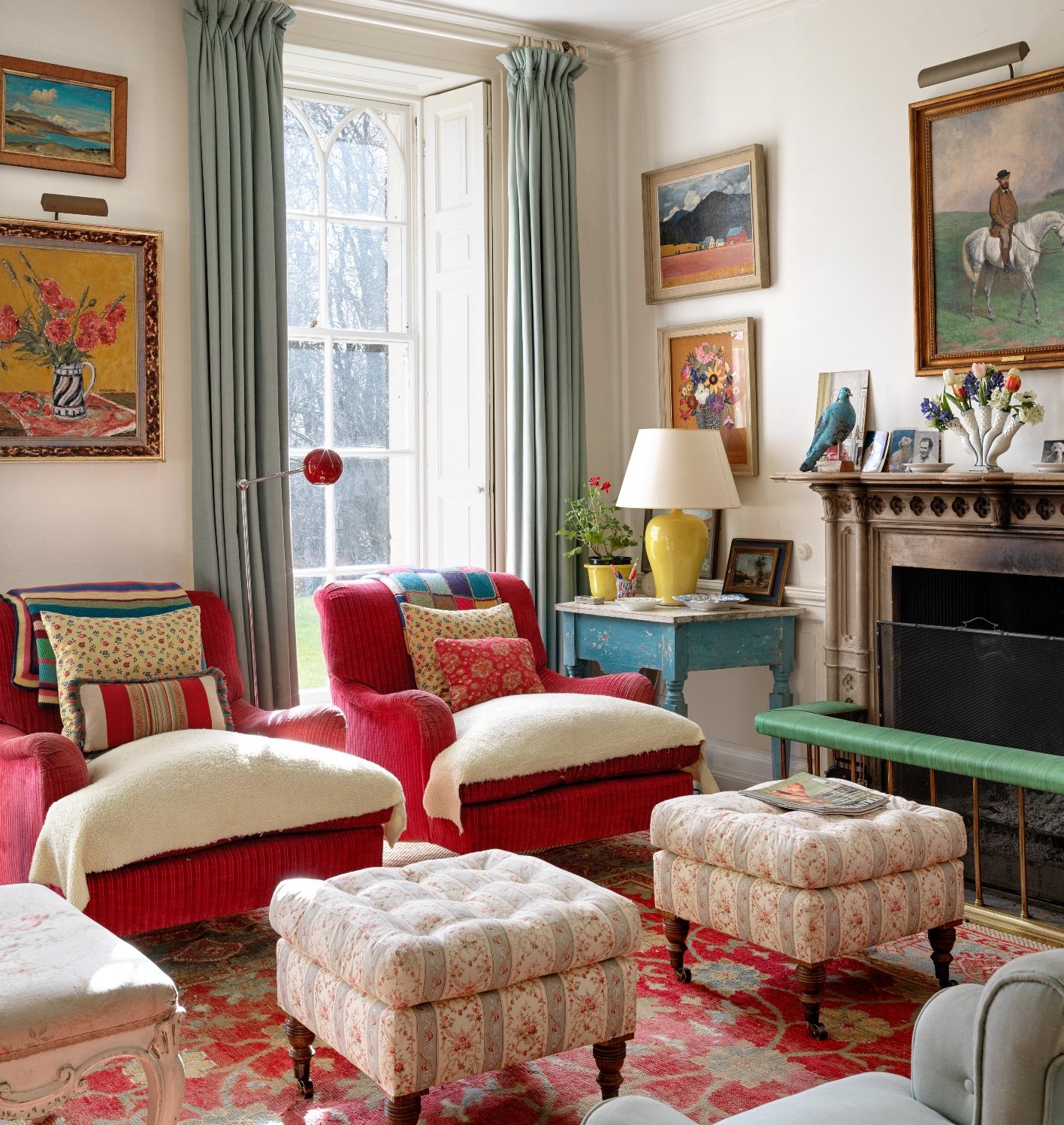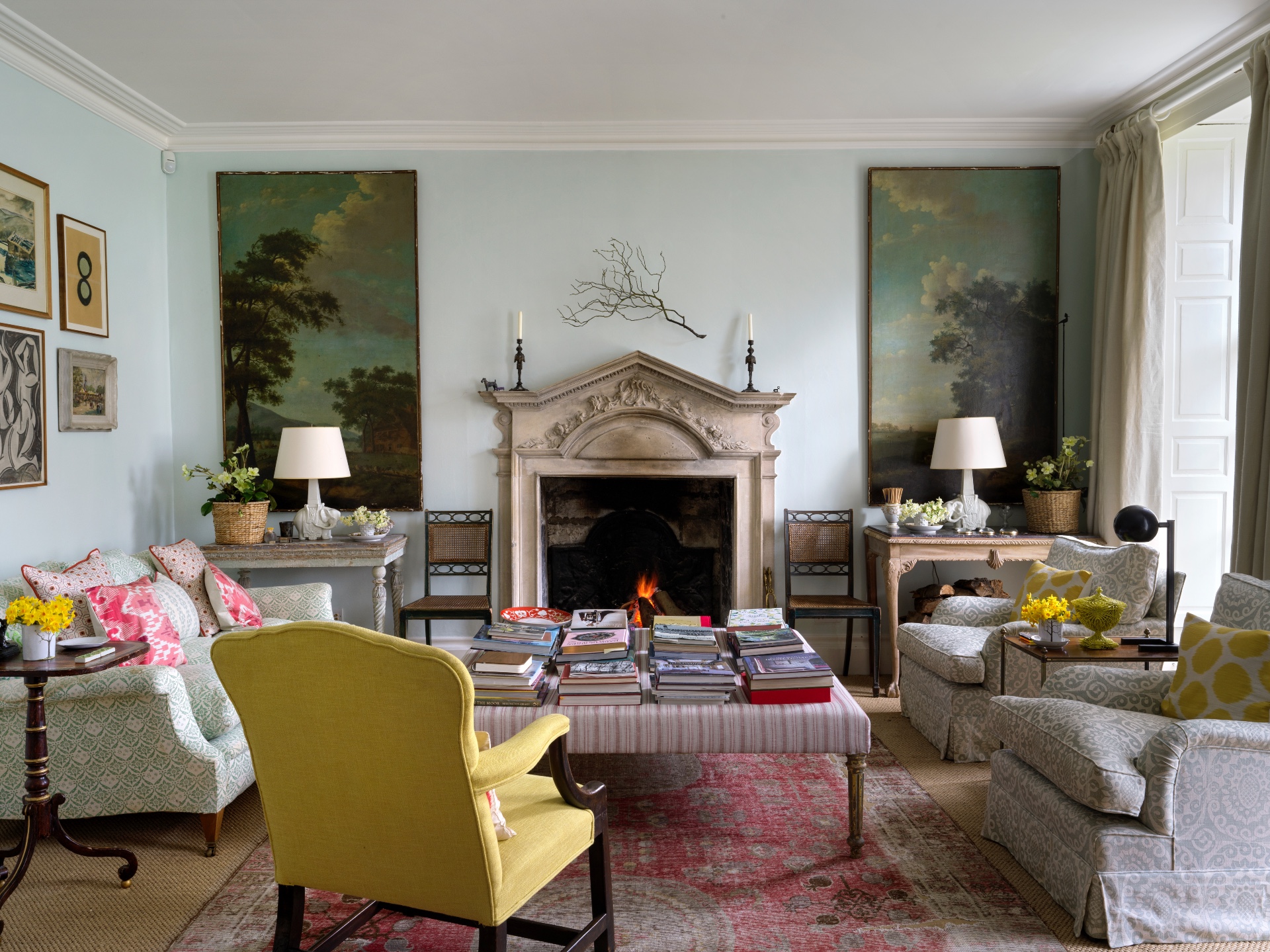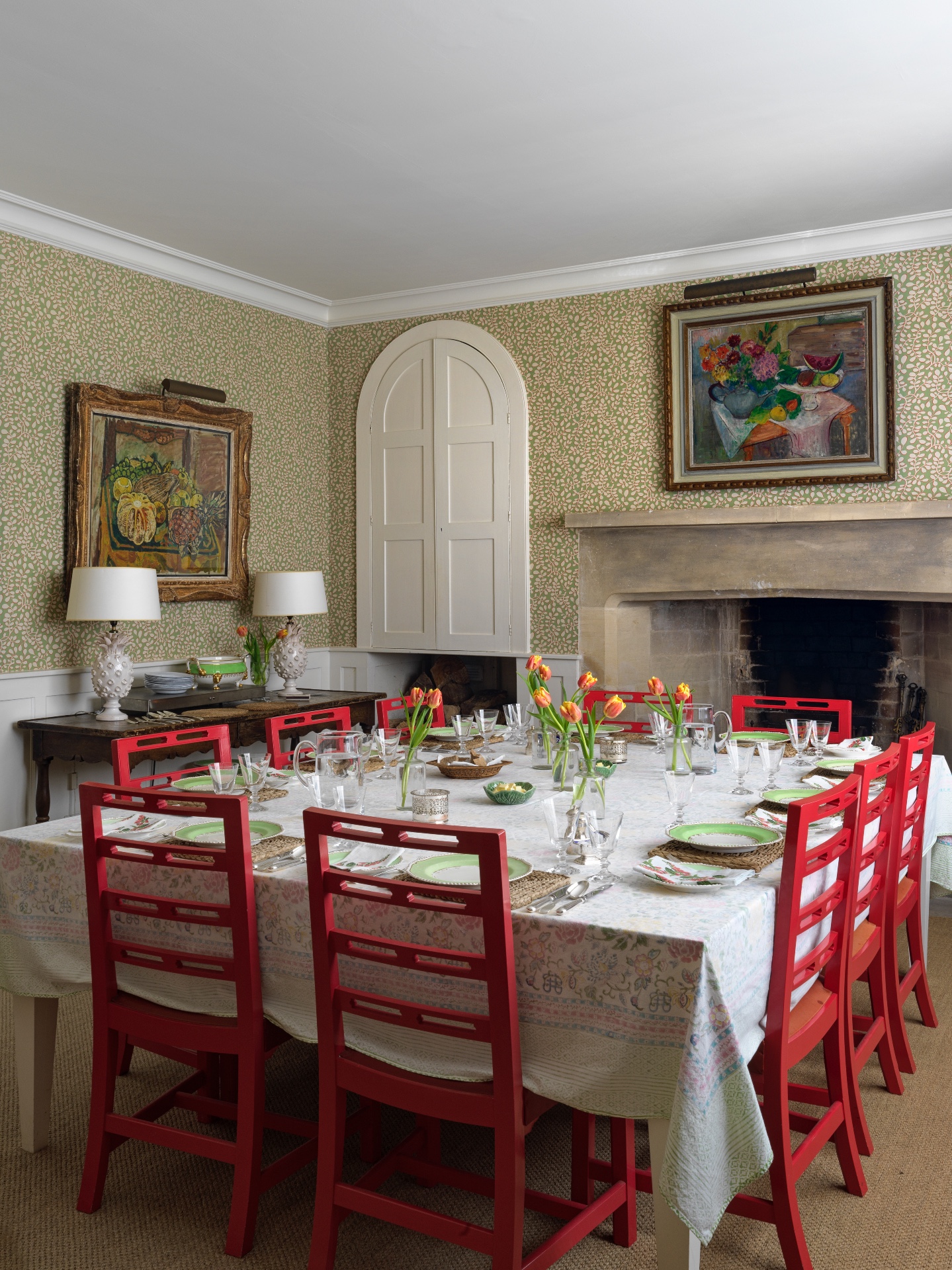At home with Cath Kidston: Inside the designer's Grade-II listed Cotswolds home
Our interiors guru Giles Kime has known designer Cath Kidston for decades. She invited him to take a look inside her Grade-II listed Cotswolds home.


What do you do when you’ve turned your distinctive style into a much-loved business, been awarded an MBE and brought a beautiful 17th-century house in the Cotswolds back to life?
Laurels are never quite as comfortable a place to rest as people imagine, especially when you’ve spent 20 years tirelessly building the most distinctive high-street brand since Laura Ashley to create that holy grail of retail: a magical mix of originality, desirability and accessibility. In such a case, what next?
For Cath Kidston, the circuitous route to this particular dilemma started after a stint working for the interior designer Nicky Haslam, when she co-founded a shop selling curtainalia on the borders of Chelsea and Fulham in London. Five years later, she struck out on her own, selling fabrics and accessories in bold florals that flew in the face of the prevailing taste for pallid Modernism.

Initially, she ploughed a lonely furrow, but, soon, word spread and, over the following decade, her business grew from a single store in west London to 136, including one next to Fortnum & Mason on Piccadilly. Cath Kidston tents, phones and radios followed.
The subsequent pace at which the business flourished was built not on a desire for world domination, but an ability to garner the influences of foreign trips, exhibitions and days spent rootling around antiques markets and galleries—and turn them into well-made furnishings and clothing that made her customers happy and didn’t cost the earth.
Much of the inspiration for the business can also be found in Mrs Kidston Padgham’s formative years. It’s hard to imagine now, in an era of underfloor heating, complex lighting schemes and home spas, but there was a slender strand that ran through English decorating in the 1970s and 1980s that was shaped by a combination of aesthetic and budgetary restraint.

Good, elegant antiques and paintings were complemented with simple, white, painted furniture (usually second-hand brown furniture in disguise), proper linoleum, cork flooring, plain upholstery, usually in white or pale blue. Despite its casual feel, it was a look that was painstakingly curated; carefully cultivated house plants (geraniums, amaryllis and tuberose) were complemented by simple arrangements of cut flowers.
Exquisite houses, the beauty of Nature, and how to get the most from your life, straight to your inbox.
Luxury was not a home spa, but a few yards of deep shag pile in the bathroom and a pretty eiderdown in the guest bedroom.
‘They were houses that evolved,’ she remembers, ‘with a look that was lived in, but also stylish with comfortable, colourful kitchens and wonderful bathrooms that had the biggest, thickest towels. It was driven more than anything by a desire for restraint.’ Yet it was also a look that was never po-faced; there were cheery ceramic piles of fruit from Casa Pupo, needlepoint cushions and footstools and serried ranks of family photographs.
Imbued with this sense of playfulness and a refusal to adhere to rules, she spent two decades dreaming up ideas for clothing, accessories and furnishings that appealed to both young (who found it quirky) and more mature (who found it a comforting reminder of their post-war childhood).

Its bold, distinctive excesses were generally countered with a pared-back look; if you have a floral oilcloth on the table or rose-covered ironing board, the rest of the kitchen could be a picture of Shakerish simplicity.
The designer left her eponymous business in 2016. Unburdened of the need to feed it with ideas, she and her husband, Hugh Padgham, a record producer who has worked with Peter Gabriel, Phil Collins and McFly, focused on their new home, a picture-perfect, Grade II-listed house that looks over 11 acres of its own woodland and pasture towards the gently undulating Gloucestershire countryside beyond.
For any designer making a new home offers an opportunity to try old new ideas and revive old ones. That’s precisely what the designer did, creating a series of classic schemes enlivened with colour, notably red and yellow, which are all the more zingy when they jump from what would otherwise be rather sotto voce.
She’s a great believer in updating old pieces, such as her parents' Chinese Chippendale-style table that she has topped with coloured and old upholstered pieces that have been given new life, thanks to new fabrics, and cushions. She always shies away from the period piece, preferring instead to mix 18th century with modern to create a look that is fresh, distinctive and very much her own.

For a designer who spent almost three decades feeding a burgeoning interiors empire with a constant stream of new ideas, it’s almost impossible to creatively draw down the shutters. Now, she has gone back to her roots and established a studio, Joy of Print, specialising in pattern in west London, where it started all those years ago.
Working with a small team, she consults and creates hand-drawn patterns to commission, as well a growing portfolio of designs that are shared with other brands, from the boutique lighting specialist Rosi de Ruig to giants such as Uniqlo.
Late last year, she launched a capsule collection of wallpapers inspired by vintage designs and given contemporary chutzpah thanks to a fresh modern palette. The same restless imagination that made the designer a household name is back in harness.
Visit www.joyofprint.co.uk
